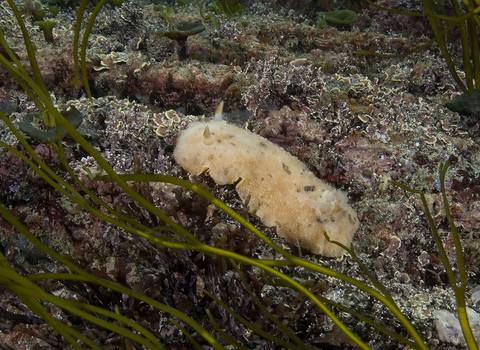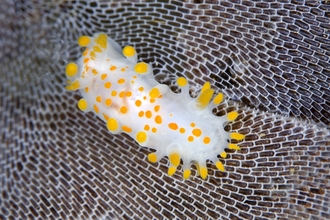
Sea lemon ©Paul Naylor www.marinephoto.co.uk
Sea lemon
A large colourful sea slug found on rocky shores around the UK.
Scientific name
Doris pseudoargusWhen to see
January to DecemberSpecies information
Category
Statistics
Length: up to 12cmConservation status
Common



